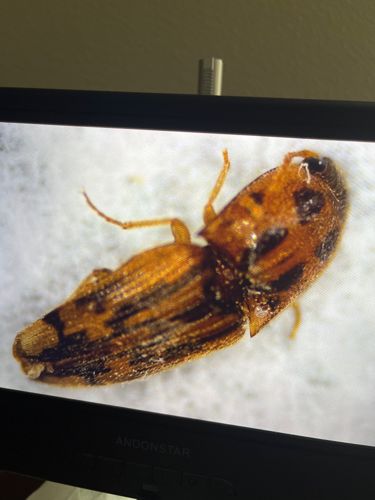Click Beetle (likely a species of the genus 'Aeolus' or similar patterned Elateridae)
Scientific Name: Varied (e.g., 'Aeolus dorsalis' or other Elateridae species with similar markings)
Order & Family: Order: Coleoptera, Family: Elateridae
Size: Typically 5mm to 30mm for most species, though some can be larger.

Natural Habitat
Click beetles are diverse and found in various habitats, including forests, grasslands, agricultural fields, gardens, and sometimes indoors. Many larvae (wireworms) live in soil or decaying wood.
Diet & Feeding
Adult click beetles often feed on nectar, pollen, sap, or plant juices, and some may not feed much at all. Larvae (wireworms) are typically herbivorous, feeding on plant roots, seeds, and tubers. Some larval species are predators of other soil insects.
Behavior Patterns
Click beetles are known for their unique 'clicking' mechanism, where they can snap their prothorax against their mesothorax to right themselves if overturned, often with an audible click and a jump. They are generally nocturnal or crepuscular. The larval stage (wireworms) can be long-lived, sometimes several years, before pupating and emerging as adult beetles.
Risks & Benefits
Risks: Larval wireworms can be significant agricultural pests, damaging crops by feeding on roots and seeds, leading to crop loss. Benefits: Some click beetle larvae are predatory and help control other pest insects in the soil. Adult click beetles can act as pollinators to a minor extent while feeding on nectar and pollen.
Identified on: 9/5/2025